Alejandro Rosales-Pérez
Comparison and Evaluation of Methods for a Predict+Optimize Problem in Renewable Energy
Dec 21, 2022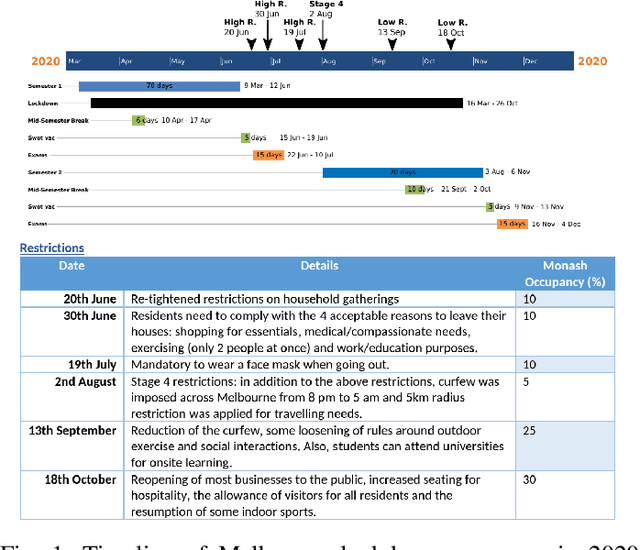
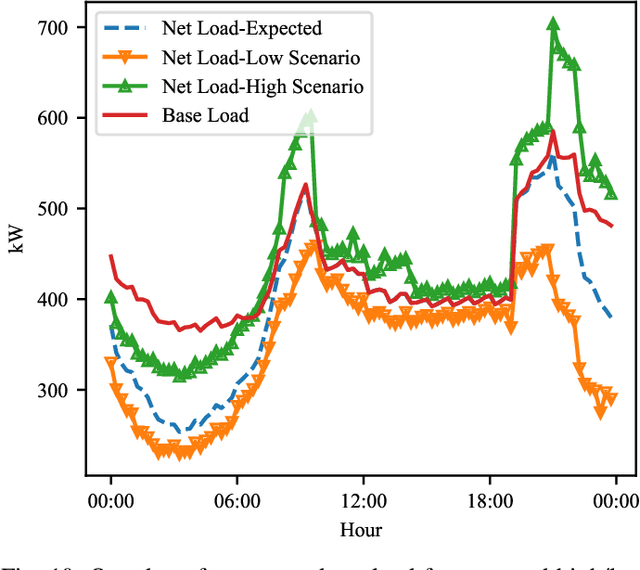
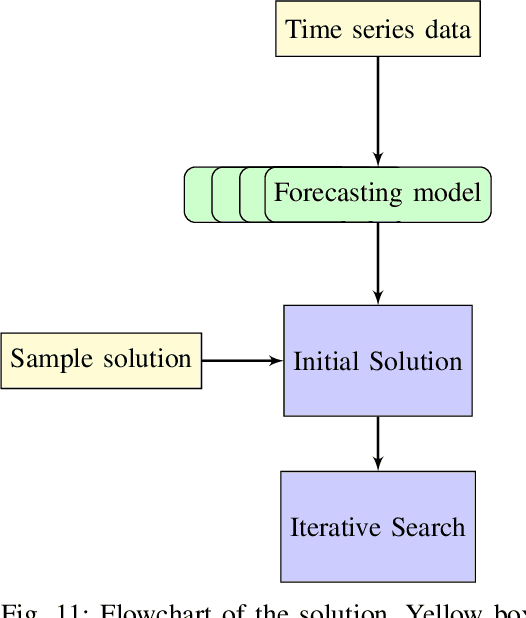
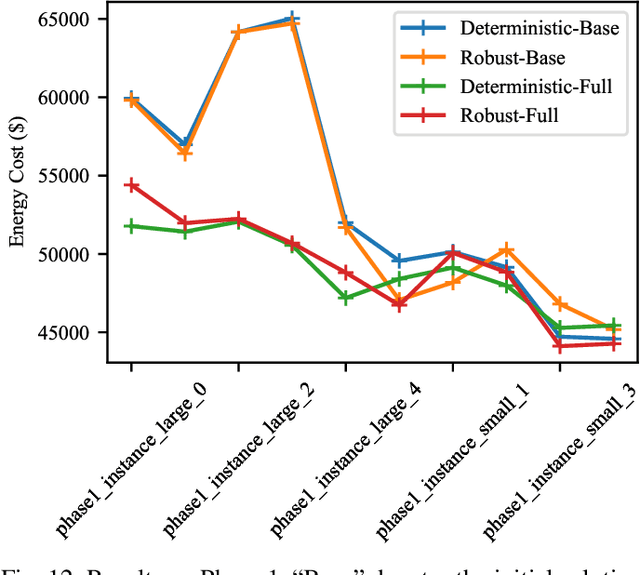
Abstract:Algorithms that involve both forecasting and optimization are at the core of solutions to many difficult real-world problems, such as in supply chains (inventory optimization), traffic, and in the transition towards carbon-free energy generation in battery/load/production scheduling in sustainable energy systems. Typically, in these scenarios we want to solve an optimization problem that depends on unknown future values, which therefore need to be forecast. As both forecasting and optimization are difficult problems in their own right, relatively few research has been done in this area. This paper presents the findings of the ``IEEE-CIS Technical Challenge on Predict+Optimize for Renewable Energy Scheduling," held in 2021. We present a comparison and evaluation of the seven highest-ranked solutions in the competition, to provide researchers with a benchmark problem and to establish the state of the art for this benchmark, with the aim to foster and facilitate research in this area. The competition used data from the Monash Microgrid, as well as weather data and energy market data. It then focused on two main challenges: forecasting renewable energy production and demand, and obtaining an optimal schedule for the activities (lectures) and on-site batteries that lead to the lowest cost of energy. The most accurate forecasts were obtained by gradient-boosted tree and random forest models, and optimization was mostly performed using mixed integer linear and quadratic programming. The winning method predicted different scenarios and optimized over all scenarios jointly using a sample average approximation method.
Handling Imbalanced Classification Problems With Support Vector Machines via Evolutionary Bilevel Optimization
Apr 21, 2022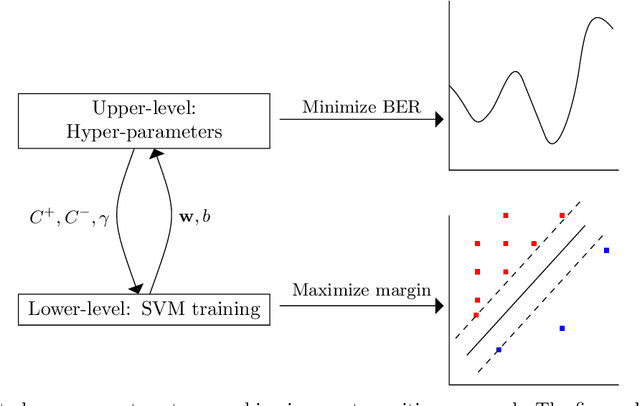
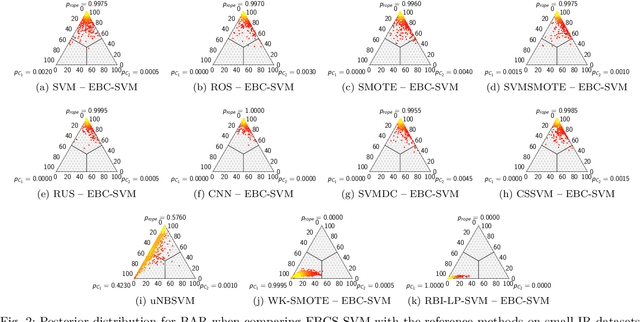
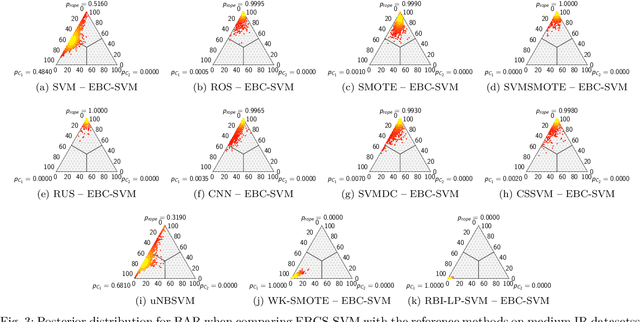
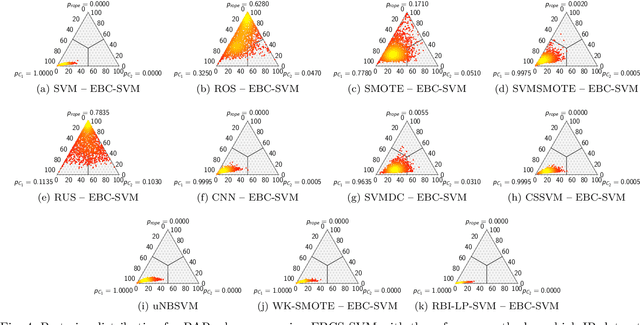
Abstract:Support vector machines (SVMs) are popular learning algorithms to deal with binary classification problems. They traditionally assume equal misclassification costs for each class; however, real-world problems may have an uneven class distribution. This article introduces EBCS-SVM: evolutionary bilevel cost-sensitive SVMs. EBCS-SVM handles imbalanced classification problems by simultaneously learning the support vectors and optimizing the SVM hyperparameters, which comprise the kernel parameter and misclassification costs. The resulting optimization problem is a bilevel problem, where the lower level determines the support vectors and the upper level the hyperparameters. This optimization problem is solved using an evolutionary algorithm (EA) at the upper level and sequential minimal optimization (SMO) at the lower level. These two methods work in a nested fashion, that is, the optimal support vectors help guide the search of the hyperparameters, and the lower level is initialized based on previous successful solutions. The proposed method is assessed using 70 datasets of imbalanced classification and compared with several state-of-the-art methods. The experimental results, supported by a Bayesian test, provided evidence of the effectiveness of EBCS-SVM when working with highly imbalanced datasets.
* Copyright 2022 IEEE. Personal use of this material is permitted. Permission from IEEE must be obtained for all other uses, in any current or future media, including reprinting/republishing this material for advertising or promotional purposes, creating new collective works, for resale or redistribution to servers or lists, or reuse of any copyrighted component of this work in other works
A Generic Deep Learning Based Cough Analysis System from Clinically Validated Samples for Point-of-Need Covid-19 Test and Severity Levels
Nov 10, 2021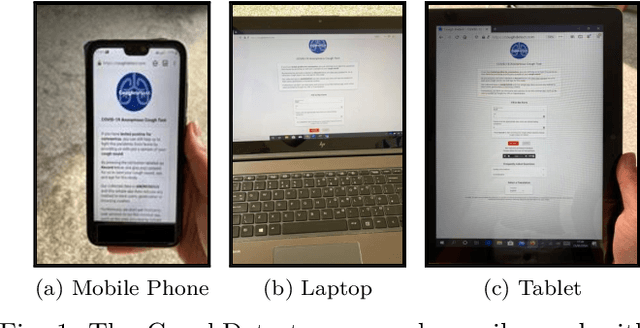
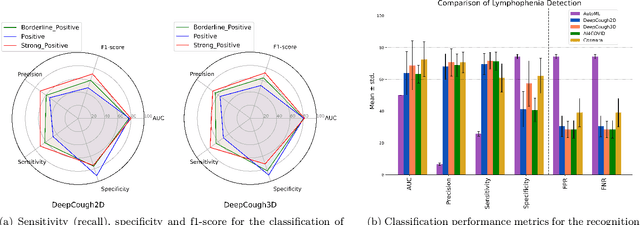

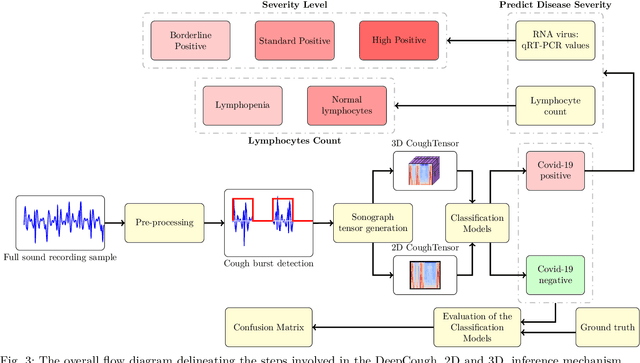
Abstract:We seek to evaluate the detection performance of a rapid primary screening tool of Covid-19 solely based on the cough sound from 8,380 clinically validated samples with laboratory molecular-test (2,339 Covid-19 positives and 6,041 Covid-19 negatives). Samples were clinically labeled according to the results and severity based on quantitative RT-PCR (qRT-PCR) analysis, cycle threshold, and lymphocytes count from the patients. Our proposed generic method is an algorithm based on Empirical Mode Decomposition (EMD) with subsequent classification based on a tensor of audio features and a deep artificial neural network classifier with convolutional layers called DeepCough'. Two different versions of DeepCough based on the number of tensor dimensions, i.e. DeepCough2D and DeepCough3D, have been investigated. These methods have been deployed in a multi-platform proof-of-concept Web App CoughDetect to administer this test anonymously. Covid-19 recognition results rates achieved a promising AUC (Area Under Curve) of 98.800.83%, sensitivity of 96.431.85%, and specificity of 96.201.74%, and 81.08%5.05% AUC for the recognition of three severity levels. Our proposed web tool and underpinning algorithm for the robust, fast, point-of-need identification of Covid-19 facilitates the rapid detection of the infection. We believe that it has the potential to significantly hamper the Covid-19 pandemic across the world.
 Add to Chrome
Add to Chrome Add to Firefox
Add to Firefox Add to Edge
Add to Edge